Article category: Mining
Get to Know Marigold (Part 6): Marigold Workflows & Derived...
In this blog, we continue our exploration of Marigold's Workflows & Derived Products on creating...
Article category: Mining
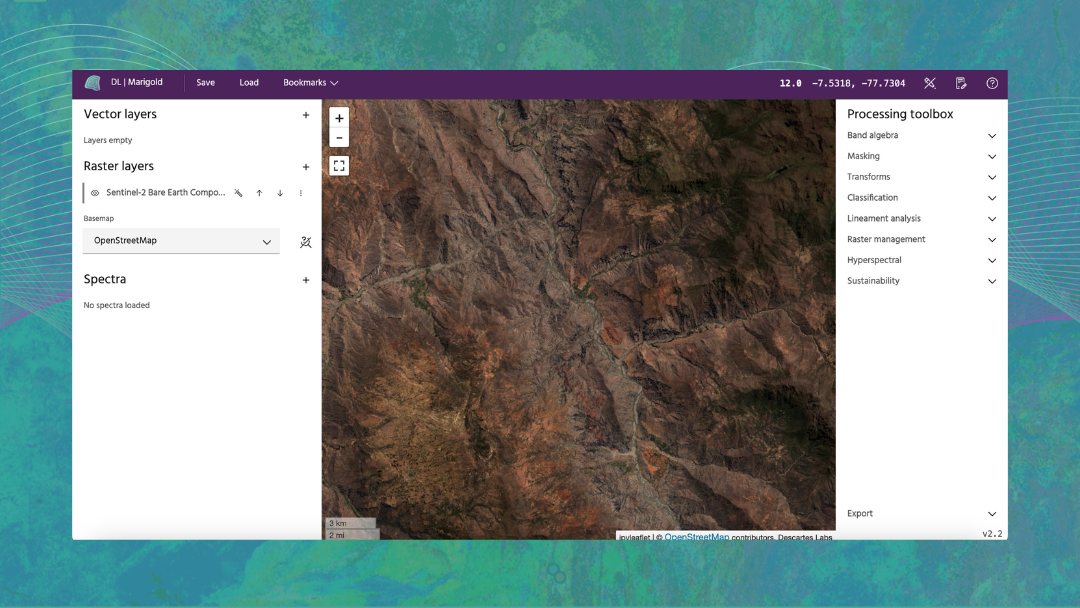
Welcome to Marigold! This is part 1 of the Get to Know Marigold blog series with helpful videos. In the following video snippets, we will provide you with an introduction and product overview of many of the Marigold components.
Marigold is designed for remote sensing and project geologists. It is set up to work much like any Geographic Information System, or GIS, interface. On the left hand side of the screen, you’ll find the hub for managing products generated in Marigold.
Marigold allows you to easily process Raster data. Navigate through our Descartes Labs Data Catalog by simply clicking the plus sign adjacent to the Raster layers header.
Within the Catalog there are datasets for Multispectral data, such as our unique Descartes Labs Bare Earth Composites. You will also find data for Topography, Geophysics, Hyperspectral, and custom datasets over your Area of Interest (or AOI).
To access Vector data tools, click on the plus sign next to “Vector layers” on the left hand side of the Marigold interface. Here you can create or load a Vector dataset.
TIP: Vector datasets must be GeoJSON format. Once the Vector dataset is created or loaded, click the three-dot menu to adjust the settings, zoom, or download.
At the top of the interface, you can save or load a processing workflow.
The Bookmark function acts as your personal navigator. You can store key locations for easy access.
On the top right of the interface, the Lat Long feature enables precise location input for any location around the world. You can find coordinates in Google maps by right-clicking on a specific location in the map, then click the coordinates to copy them and paste into the Lat Long feature in Marigold.
The center of the Marigold interface is where you can manipulate the Imagery. The Live dataset shown here is the Sentinel-2 Bare Earth Composite dataset, which is loaded by default into Marigold. You can pan and zoom in and out to view global locations.
TIP: To help the imagery load quickly, toggle off the layer visibility when panning or zooming to distant locations.
Video: Pixel Inspector
Further to the right on the Marigold interface is the Pixel Inspector Tool, which is used for spectral data interrogation. Use the Pixel Inspector to provide actual data reflectance values for each pixel. We will show you more about how to use that tool in future training videos when we delve into masking and spectral analysis.
You’ll also see on the right the Marigold Processing Toolbox, which contains a series of tools that make remote sensing processing (for Mineral Exploration) easy and accessible. These include masking, generation of Band Ratios, Mineral Indices as well as three-band images (or RGB’s). Additional processing tools include Transforms (including Principal Components Analysis), Classifications (both unsupervised and supervised), Lineament analysis and a selection of post-processing tools for data and results management.
Although mainly set up for Multispectral processing, you will also find Hyperspectral data processing capabilities in the toolbox. Hyperspectral data processing is available with an additional Hyperspectral data processing license.

Now let’s explore the Spectral functionality of Marigold. Navigate to the left side and click on the plus sign to the right of the Spectral header. This part of the Marigold interface provides access to a wide range of spectral data that can be used and managed in Marigold. Clicking on the plus sign provides multiple options, including: Directly querying the imagery, generating an in-scene spectral signature, averaging a spectrum from a vector that you have created or loaded, and uploading a spectrum from a variety of different formats, such as an ask key file, a file from an ASD, or other spectral radiometers in their native formats.
Additionally, you can manage spectra in spectral libraries. We will share more details on using spectral tools in upcoming training videos.

Lastly, our Export features enables the exporting of products generated in Marigold. In the lower right of the interface, click on the Export menu to generate and export a geoTIFF or to check on the status of a requested export. More details on Exporting from Marigold are available in our training video series.
![]() This wraps up the introduction and product overview of Descartes Labs’ Marigold. For more information and details on how to get started with Marigold, stay tuned for the next one in our Get to Know Marigold blog series.
This wraps up the introduction and product overview of Descartes Labs’ Marigold. For more information and details on how to get started with Marigold, stay tuned for the next one in our Get to Know Marigold blog series.
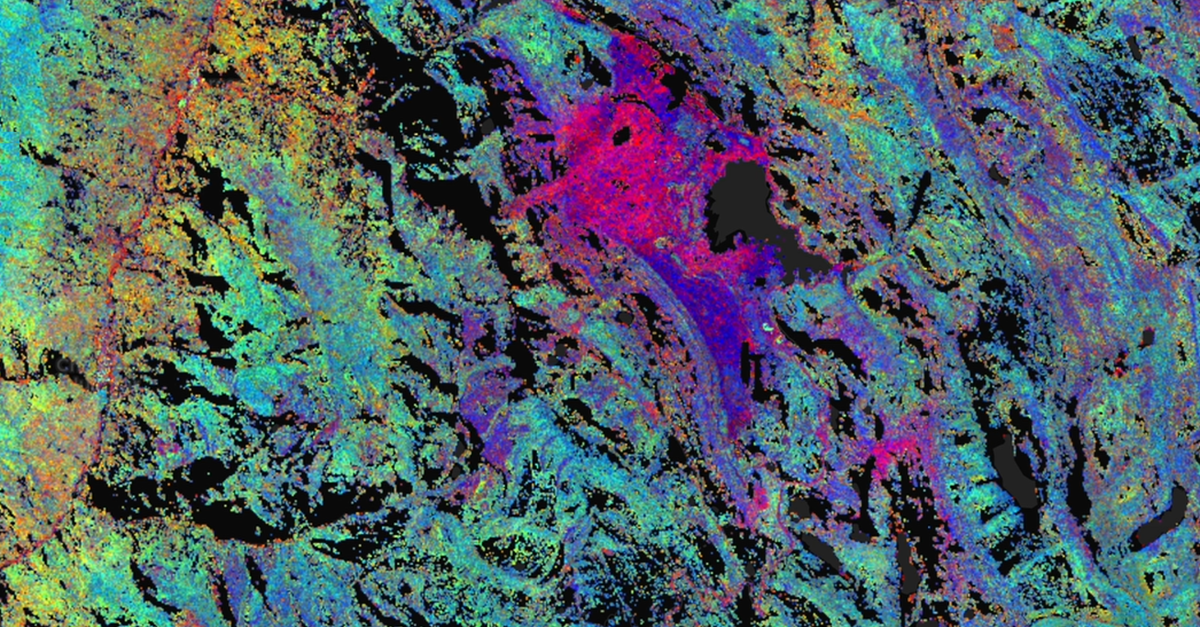
Article category: Mining
In this blog, we continue our exploration of Marigold's Workflows & Derived Products on creating...
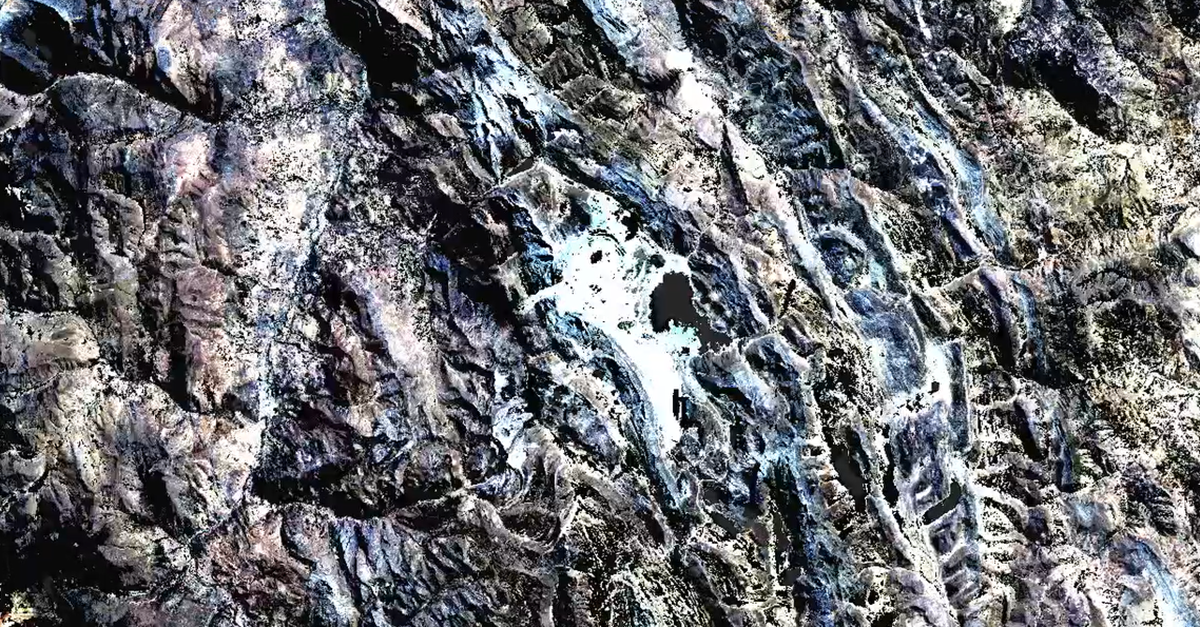
Article category: Mining
In this blog, we will walk through how to create a series of standard multispectral derived...
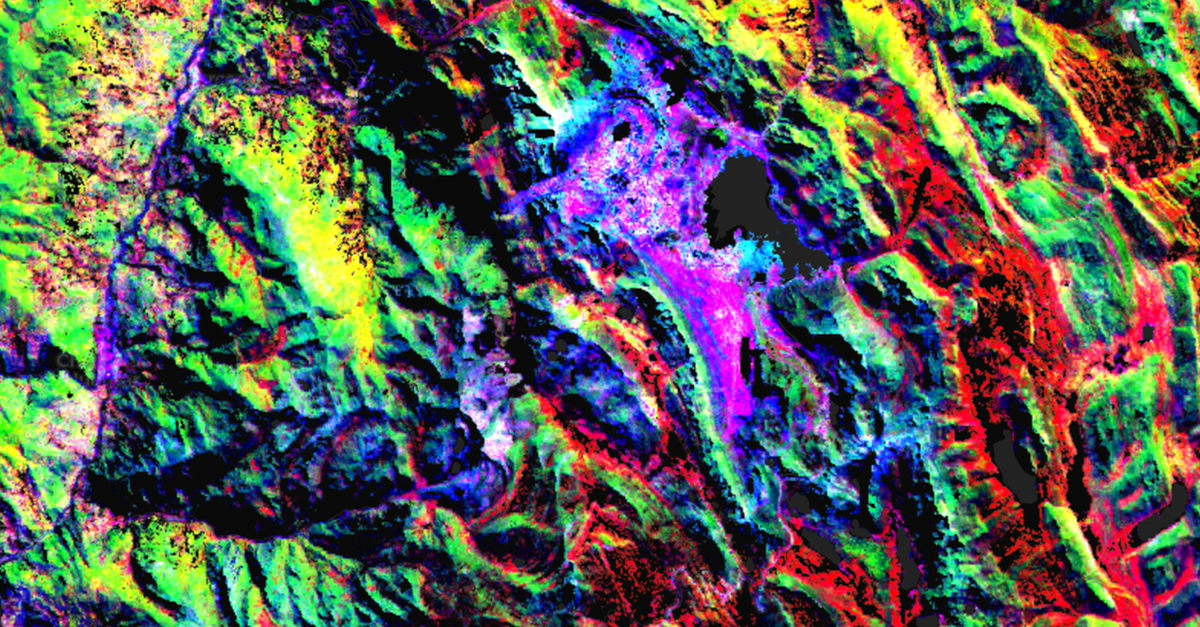
Article category: Mining
In the conclusion to our Get to Know Marigold series, we compute a Principal Component Analysis,...
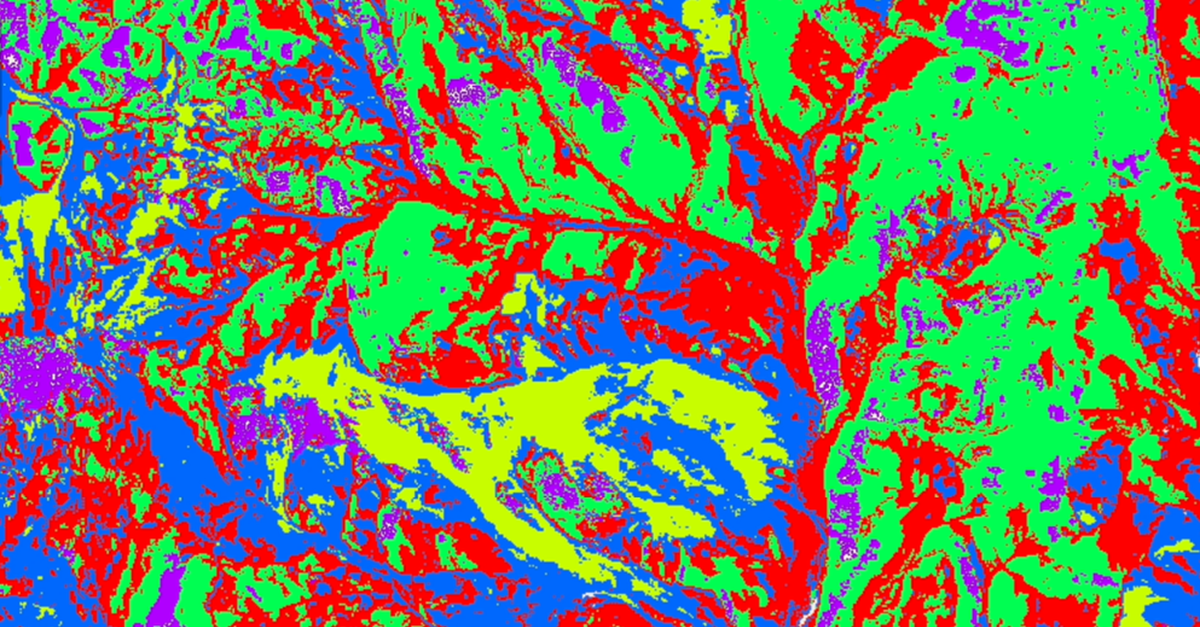
Article category: Mining
Using K-Means clustering to mask out areas you would like to remove from your imagery using the...